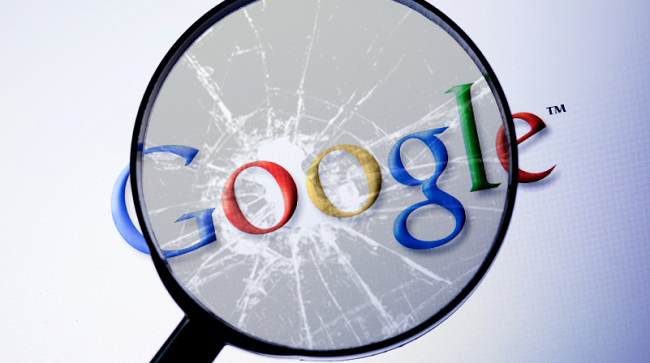
by Robyn Bolton | Dec 10, 2023 | Innovation, Leadership, Stories & Examples
In September 2006, I moved to Copenhagen, Denmark, on a temporary assignment with BCG. As one does when arriving somewhere for an extended period, I went to the grocery store to stock my kitchen.
Since the grocery store was on the ground floor of my building, I bought enough food for a few breakfasts and dinners, made note of the other offerings for future trips, and learned through painful public embarrassment that one must purchase grocery bags (and those bags are nowhere near the checkout lane).
The following day, yogurt was on the menu, and I grabbed the first of the three options I had bought the previous day – a small container of strawberry yogurt.
My heart sank when I peeled off the top.
Instead of super healthy, organic, natural (I’m in Scandinavia, for crying out loud!) yogurt, the stuff in my cup was a rather suspicious beige with dark brown flecks.
Stifling my instinct to dry heave, I chucked the cup into the garbage, along with the five other cups in the clearly spoiled pack, and pulled Brand #2 out of the refrigerator. Surely, this strawberry yogurt would be safe to eat.
But it, too, was beige. A lighter beiger and without the disturbing brown flecks. But still beige.
“You’ve got to be kidding me,” I muttered. Admittedly, the grocery store was more of a glorified convenience store, but c’mon, how hard is it to keep track of Sell By dates?
Into the garbage, it went. Out of the refrigerator came Brand #3 (Yes, I take a portfolio approach to innovation AND food purchases)
Closing my eyes and saying a quick prayer to both the grocery and yogurt gods, I peeled open the yogurt. Not beige but a slight hint of pink, just enough to reassure me that it contained strawberries and hadn’t curdled but not so much that I suspected an American-amount of food coloring.
Later that day…
At lunch, my new colleagues asked how I was settling in. I regaled them with my “bumbling American experiencing culture shock in a country where she looks (and is initially treated like) a local” stories.
As we gathered up our dishes and returned to the kitchen, I commented that I was surprised that my local grocery would keep expired products on the shelf. When they echoed my surprise, I told them about the spoiled yogurt and that 2 of the three brands I purchased were bad.
Based on the glances they exchanged, I knew I had another story to add to an already uncomfortably full book.
It turns out that. The “good” yogurt I ate that morning was from the lowest quality brand, one that no self-respecting Dane would consider eating but that is sold to unsuspecting foreigners (Hi, that’s me). The “bad” yogurt was from respected all-natural brands. All yogurt, they explained, falls somewhere in the spectrum from white to beige or even tan. That’s why they print the flavor name and a picture of the fruit on the label.
How often do we make the same mistake?
How often do we reject something because it’s not what we expect to see? Because it’s not what we’re used to?
Maybe not often when it comes to yogurt, but what about other more important things, like:
- Trends
- Technologies
- Ideas
- Business Models
- Startups
- People
And what happens when we don’t have people willing to point out that we’re no longer in a place where our status quo applies?

by Robyn Bolton | Oct 22, 2023 | Innovation, Stories & Examples
“Isn’t continuous improvement the same as incremental innovation? After all, both focus on doing what you do better, faster, or cheaper.”
Ooof, I have a love-hate relationship with questions like this one.
I hate them because, in the moment, they feel like a gut punch. The answer feels obvious to me – no, they are entirely different things – but I struggle to explain myself clearly and simply.
I love them because, once the frustration and embarrassment of being unable to offer a clear and simple answer passes, they become a clear sign that I don’t understand something well enough or that *gasp* my “obvious” answer may be wrong.
So, is Continuous Improvement the same as Incremental Innovation?
No. They’re different.
But the difference is subtle, so let’s use an analogy to tease it apart.
Imagine learning to ride a bike. When you first learn, success is staying upright, moving forward, and stopping before you crash into something. With time and practice, you get better. You move faster, stop more quickly, and move with greater precision and agility.
That’s continuous improvement. You’re using the same solution but using it better.
Now, imagine that you’ve mastered your neighborhood’s bike paths and streets and want to do more. You want to go faster, so add a motor to your bike. You want to ride through the neighboring forest, so you change to off-road tires. You want a smoother feel on your long rides, so you switch to a carbon fiber frame.
That’s incremental innovation. You changed an aspect of the solution so that it performs better.
It all comes down to the definition of innovation – something different (or new) that creates value.
Both continuous improvement and incremental innovation create value.
The former does it by improving what exists. The latter does it by changing (making different) what exists.
Got it. They are entirely different things.
Sort of.
Think of them as a Venn diagram – they’re different but similar.
There is evidence that a culture committed to quality and continuous improvement can lead to a culture of innovation because “Both approaches are focused in meeting customer needs, and since CI encourages small but constant changes in current products, processes and working methods its use can lead firms to become innovative by taking these small changes as an approach to innovation, more specifically, incremental innovation.”
Thanks, nerd. But does this matter where I work, which is in the real world?
Yes.
Continuous Improvement and Incremental Innovation are different things and, as a result, require different resource levels, timelines, and expectations for ROI.
You should expect everyone in your organization to engage in continuous innovation (CI) because (1) using CI helps the organizations change adoption and risk taking by evaluating and implementing solutions to current needs” and (2) the problem-solving tools used in CI uncover “opportunities for finding new ideas that could become incremental innovations.”
You should designate specific people and teams to work on incremental people because (1) what “better” looks like is less certain, (2) doing something different or new increases risk, and (3) more time and resources are required to learn your way to the more successful outcome.
What do you think?
How do you answer the question at the start of this post?
How do you demonstrate your answer?

by Robyn Bolton | Oct 4, 2023 | Innovation, Leadership, Stories & Examples
“Lego’s Latest Effort to Avoid Oil-Based Plastic Hits Brick Wall” – WSJ
“Lego axes plans to make bricks from recycled bottles” – BBC
“Lego ditches oil-free brick in sustainability setback” – The Financial Times
Last Monday, LEGO found itself doing the Walk of Atonement after announcing to The Financial Times that it was scrapping plans to make bricks from recycled bottles, and media outlets from The Wall Street Journal to Fast Company to WIRED were more than happy to play the Shame Nun.
And it wasn’t just media outlets ringing the Shame Bell:
- “In the future, they should not make these kinds of announcements (prototype made from recyclable plastic) until they actually do it,” Judith Enck, President of Beyond Plastics
- “They are not going to survive as an organization if they don’t find a solution,” Paolo Taticchi, corporate sustainability expert at University College London.
- “Lego undoubtedly had good intentions, but if you’re going to to (sic) announce a major environmental initiative like this—one that affects the core of your company—good intentions aren’t enough. And in this instance, it can even undermine progress.” Jesus Diaz, creative director, screenwriter, and producer at The Magic Sauce, writing forFast Company
As a LEGO lover, I am not unbiased, but WOW, the amount of hypocritical, self-righteous judgment is astounding! All these publications and pundits espouse the need for innovation, yet when a company falls even the tiniest bit short of aspirations, it’s just SHAME (clang) SHAME (clang) SHAME.
In 1946, LEGO founder Ole Kirk Christiansen purchased Denmark’s first plastic injection molding machine. Today, 95% of the company’s 4,400 different bricks are made using acrylonitrile butadiene styrene (ABS), a plastic that requires 4.4 pounds of oil to produce 2.2 pounds of brick. Admittedly, it’s not a great ratio, and it gets worse. The material isn’t biodegradable or easily recyclable, so when the 3% of bricks not handed down to the next generation end up in a landfill, they’ll break down into highly polluting microplastics.
With this context, it’s easy to understand why LEGO’s 2018 announcement that it will move to all non-plastic or recycled materials by 2030 and reduce its carbon emissions by 37% (from 2019’s 1.2 million tons) by 2032 was such big news.
Three years later, in 2021, LEGO announced that its prototype bricks made from polyethylene terephthalate (PET) bottles offered a promising alternative to its oil-based plastic bricks.
But last Monday, after two years of testing, the company shared that what was promising as a prototype isn’t possible at scale because the process required to produce PET-based bricks actually increases carbon emissions.
SHAME!
A LEGO Art World Map (i.e. massive) amount of praise for LEGO
LEGO is doing everything that innovation theorists, consultants, and practitioners recommend:
- Setting a clear vision and measurable goals so that people know what the priorities are (reduce carbon emissions), why they’re important (“playing our part in building a sustainable future and creating a better world for our children to inherit”), and the magnitude of change required
- Defining what is on and off the table in terms of innovation, specifically that they are not willing to compromise the quality, durability, or “clutch power” of bricks to improve sustainability
- Developing a portfolio of bets that includes new materials for products and packaging, new services to keep bricks out of landfills and in kids’ hands, new building and production processes, and active partnerships with suppliers to reduce their climate footprint
- Prototyping and learning before committing to scale because what is possible at a prototype level is different than what’s possible at pilot, which is different from what’s possible at scale.
- Focusing on the big picture and the long-term by not going for the near-term myopic win of declaring “we’re making bricks from more sustainable materials” and instead deciding “not to progress” with something that, when taken as a whole process, moves the company further away from its 2032 goal.
If we want companies to innovate (and we do), shaming them for falling short of perfection is the absolute wrong way to do it.
Is it disappointing that something that seemed promising didn’t work out? Of course. But it’s just one of many avenues and experiments being pursued. This project ended, but the pursuit of the goal hasn’t.
Is 2 years a long time to figure out that you can’t scale a prototype and still meet your goals? Maybe. But, then again, it took P&G 10 years to figure out how to develop and scale a perforation that improved one-handed toilet paper tearing.
Should LEGO have kept all its efforts and success a secret until everything was perfect and ready to launch? Absolutely not. Sharing its goals and priorities, experiments and results, learnings and decisions shows employees, partners, and other companies what it means to innovate and lead.
Is LEGO perfect? No.
Is it trying to be better? Yes.
Isn’t that what we want?

by Robyn Bolton | Sep 27, 2023 | Innovation, Stories & Examples
In the room were two single beds, each with a fluffy white comforter folded neatly on top.
“Yeah, this is not gonna work.”
I had just entered my one-bedroom corporate apartment in Copenhagen, and while everything else was pleasantly light and spacious, there was no way I would spend the next six months sleeping in a single bed.
So, I set down my suitcases and immediately pushed the two beds together, using the two nightstands to secure them. The two comforters would work since there was just one of me, and I made a mental note to request a king-sized comforter from the desk when I left for work in the morning.
Thus began the great Comforter Cold War of 2006/2007.
Every few days, I would request a king-sized comforter for my jerry-rigged king-sized bed. I would return to find one queen-sized comforter. The luxury of a larger comforter would diminish the disappointment of not getting an appropriately sized one, and I would bask in the warmth of fully covered sleep. For one night. The next day, I would return to my room only to find that the two single comforters had returned.
This went on for nine months.
I shared this story of passive-aggressive housekeeping at my going away party with my colleagues. Midway through the story, I noticed the absolutely baffled looks on their faces.
“What?”
“Why did you want one comforter?”
“Because I have one bed. A comforter should cover the bed.”
“Why? A bed doesn’t need a comforter. A person does. You just need a comforter to cover you.”
[extended silence while we try to process each other’s points]
“So, does that mean that in Denmark, if a couple sleeps together, they each have their own comforter?”
“Yes, of course! Why would we share? Each person has their own temperature preferences, and there’s no worry about someone stealing your covers.”
My mind. Was. Blown.
This made so much sense. A comforter covers a person, so the 1:1 ratio of comforter to people is far more logical than a 1:1 ratio of comforter to bed (and often a 1:2 ratio of comforter to people). Seriously, how many relationships would be saved by simply having separate comforters?
Yet, for nine months, it made more sense to me to battle for a comforter size that apparently doesn’t exist in the country without ever asking why I couldn’t get what I was so clearly and reasonably (in my mind) requesting.
I assumed the apartment building didn’t have king-sized comforters or only enough for the actual king-sized beds. I assumed housekeeping was on automatic pilot, not realizing they were replacing a queen-sized comforter with two single ones. I assumed that communication amongst the staff was poor, so my request wasn’t being shared. I assumed a lot.
But I never assumed that I was wrong and that the root of the problem was a cultural difference so deeply ingrained and subtle that it never occurred to anyone to question it.
Question your assumptions.
Assumptions are a shortcut to understanding our world. Based on culture, experiences, and even stereotypes, we make assumptions about what came before, who we’re interacting with, what’s happening now, and what will happen next.
Most of the time, we’re right (or at least more right than wrong), so we keep making assumptions. It’s also why, when our assumptions are wrong, we tend to question everything but our assumptions.
And that kills innovation because it limits our curiosity and imagination, our perception of what’s possible, and our willingness to engage with and learn from others.
We all cling to assumptions that lead to Cold Wars.
What’s yours?

by Robyn Bolton | May 17, 2023 | Innovation, Leadership, Stories & Examples
A few weeks ago, a Google researcher leaked an internal document asserting that Google (and open AI) will lose the AI “arms race” to Open Source AI.
I’ll be honest: I didn’t understand much of the tech speak – LLM, LLaMA, RLHF, and LoRA are just letters to me. But I understood why the memo’s writer believed that Google was about to lose out on a promising new technology to a non-traditional competitor.
They’re the same reasons EVERY large established company loses to startups.
Congratulations, big, established industry incumbents, you’re finally innovating like Google!
(Please note the heavy dose of sarcasm intended).
Innovation at Google Today
The document’s author lists several reasons why “the gap is closing astonishingly quickly” in terms of Google’s edge in AI, including:
- “Retraining models from scratch is the hard path” – the tendency to want to re-use (re-train) old models because of all the time and effort spent building them, rather than start from scratch using newer and more flexible tools
- “Large models aren’t more capable in the long run if we can iterate faster on small models” – the tendency to want to test on a grand scale, believing the results are more reliable than small tests and drive rapid improvements.
- “Directly competing with open source is a losing proposition” – most people aren’t willing to pay for perfect when “good enough” is free.
- “We need them more than they need us” – When talent leaves, they take knowledge and experience with them. Sometimes the competitors you don’t see coming.
- “Individuals are not constrained by licenses to the same degree as corporations” – Different customers operate by different rules, and you need to adjust and reflect that.
- “Being your own customer means you understand the use case” – There’s a huge difference between designing a solution because it’s your job and designing it because you are in pain and need a solution.
What it sounds like at other companies
Even the statements above are a bit tech industry-centric, so let me translate them into industry-agnostic phrases, all of which have been said in actual client engagements.
- Just use what we have. We already paid to make it.
- Lots of little experiments will take too long, and the dataset is too small to be trusted. Just test everything all at once in a test market, like Canada or Belgium.
- We make the best [product]. If customers aren’t willing to pay for it because they don’t understand how good it is, they’re idiots.
- It’s a three-person startup. Why are we wasting time talking about them?
- Aren’t we supposed to move fast and test cheaply? Just throw it in Google Translate, and we’ll be done.
- Urban Millennials are entitled and want a reward. They’ll love this! (60-year-old Midwesterner)
How You (and Google) can get back to the Innovative Old Days
The remedy isn’t rocket (or computer) science. You’ve probably heard (and even advocated for) some of the practices that help you avoid the above mistakes:
- Call out the “sunk cost fallacy,” clarify priorities, and be transparent about trade-offs. Even if minimizing costs is the highest priority, is it worth it at the expense of good or even accurate data?
- Define what you need to learn before you decide how to learn it. Apply the scientific method to the business by stating your hypothesis and determining multiple ways to prove or disprove it. Once that’s done, ask decision-makers what they need to see to agree with the test’s result (the burden of proof you need to meet).
- Talk. To. Your. Customers. Don’t run a survey. Don’t hire a research firm. Stand up from your desk, walk out of your office, go to your customers, and ask them open-ended questions (Why, how, when, what).
- Constantly scan the horizon and seek out the small players. Sure, most of them won’t be anything to worry about, but some will be on to something. Pay attention to them.
- See #3
- See #3
Big companies don’t struggle with innovation because the leaders aren’t innovative (Google’s founders are still at the helm), the employees aren’t smart (Google’s engineers are amongst the smartest in the world), or the industry is stagnating (the Tech industry has been accused of a lot, but never that).
Big companies struggle to innovate because operating requires incredible time, money, and energy. Adding innovation, something utterly different, to the mix feels impossible. But employees and execs know it’s essential. So they try to make innovation easier by using the tools, processes, and practices they already have.
It makes sense.
Until you wake up and realize you’re Google.

by Robyn Bolton | May 11, 2023 | Leadership, Stories & Examples, Tips, Tricks, & Tools
“We have successfully retained the opportunity for improvement.”
When the CEO said this to kick off a meeting, I knew we were in for an adventure. He smirked at the corporate double-speak, paused for the laughter, then outlined all the headwinds facing the business. But the only thing I remember from that meeting was his opening line.
I think about it all the time. Because it seems to apply all the time.
And despite the turmoil brought on by a pandemic, a war, and an economic slowdown, we have successfully retained the opportunity to improve how we deal with uncertainty.
That isn’t to say we haven’t improved over the past three years. In fact, at an event sponsored by NextUp, four executives from P&G, CVS, Hannaford, and Intel shared what they learned and how they changed while navigating uncertainty.
Listen more
Dave DeJohn, Director of Operations for Hannaford, talked about the importance of listening deeply and constantly to employees, especially those on the front lines. Consistent with its core values of family, community, quality, and value, store associates are trained that the customer is always right. However, as incidents of verbal abuse increased during the lockdowns, employee satisfaction and mental health declined. By closely listening and observing what was happening in stores, Hannaford’s leadership modified their customer service approach to “the customer is always right, within reason” and empowered employees to stand up for themselves and each other when faced with hostile shoppers.
Stronger relationships lead to stronger results
Every executive shared stories from the early days of working from home – technical glitches, kids invading calls, and even cats positioning themselves awkwardly in front of cameras when the human stepped away. Far from being signals of a lack of commitment or professionalism, these moments transformed roles and titles into human beings, juggling all the things humans must juggle. Once people started seeing others as fellow humans versus bosses, peers, or subordinates, they connected on a human level and formed genuine and trusting relationships. Those relationships led to better collaboration, more effective troubleshooting, and better business results.
Concise concrete communication is critical
In periods of uncertainty, information is power. But it’s also constantly changing. For that reason, constant communication is a must. But in a large organization, communication often comes from multiple departments – employee relations, HR, health and safety, operations, and marketing, to name a few – and that can be overwhelming. For this reason, DeJohn learned that keeping every message concise (ideally the length of a tweet but no more than a short paragraph) and concrete (specific, tangible, tactical rather than high-level platitudes) proved critical to keeping people aligned and moving forward.
Just because you can, doesn’t mean you need to
Keris Clark, VP of Sales at P&G, spoke about the drastic shift in her work/life balance when she could no longer travel to see customers or attend meetings. Instead of taking the first flight from Boston to Seattle for a meeting and then a red-eye back home, she suddenly had time to work out, cook, and spend time with family. As travel became safer and invitations to far-away meetings came in, she thought more critically about whether or not to book the tickets. Like most of us, she still travels for some things, but it’s no longer the default option now that more people are used to video calls and other ways of working.
We can do things differently and still deliver
COVID’s effect on the supply chain is well documented, and Tiffiny Fisher, Chief of Staff and Technical Assistant for Intel’s America region, gave us a view into Intel’s situation in the earliest days of the pandemic. With fabrication, assembly, and testing sites throughout Asia, Intel had to work quickly to figure out how to continue operating while staying with government lockdown guidelines. Ultimately, hundreds of employees volunteered to leave their families and live in hotels near Intel facilities so that they could continue operating. It was a huge sacrifice by employees and probably not one that anyone would want to make again. Still, it proved that Intel, with the support of its employees, could quickly make massive changes to its operations while continuing to deliver results.
Uncertainty can be deeply uncomfortable, even frightening, even though we face it every day. Building the skills to navigate it and learning lessons about what works and doesn’t can make it easier. But if you still struggle, don’t worry. It just means you’ve successfully retained the opportunity for improvement.





